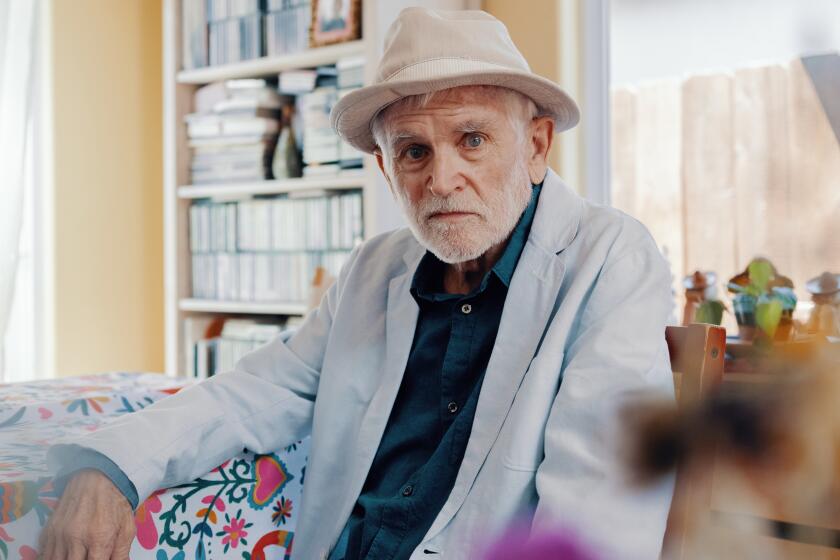Book Review : A Novelist Touring Out of Her Literary Element
- Share via
(Woman) Writer by Joyce Carol Oates (A William Abrahams Book/E.P. Dutton; $18.40; 402 pages)
An artist in her highly constructed fictional world of privacy and Gothic-tinged allegory, Joyce Carol Oates is a tourist outside it.
She makes an intelligent tourist but she is not, on some ungovernable impulse, going to jump ship and go native. She has a return ticket and will be back when arranged.
In this collection of essays and sketches--some of them literary, others touching on such things as boxing and food--Oates gives a sense of relaxing into her subject. For the most part, she tells us, they were written for an occasion or upon an invitation.
They lack the bite of the novelist’s fiction. They also lack the bite of an essayist’s essay. As a guest, she behaves like one. Interrogated for the occasion, she says what she has to say in response. Without the invitation, you sense, she might not have bothered to say it.
Agreeable Conversation
There are writers, as well as civilians, who shine specially as guests. They come to outsized life at a party and afterwards, for all one knows, they subside into lethargy and kick the cat. Oates makes agreeable conversation without very much flavor. When the subject is particularly farfetched, it becomes strained.
Several of the literary pieces consist of lists, prefaced or concluded by sensible but not very expansive observations. “Beginnings” considers the seemingly wispy origins of a number of considerable works, the dislodged pebble that releases an avalanche.
Henry James’ “The Spoils of Poynton” was set off by an anecdote the author heard at dinner and interrupted so as not to hear too much. John Updike’s “The Poorhouse Fair” began when the author saw the excavation where an old people’s home had stood. Joan Didion’s “Play It as It Lays” came from an image of whiteness.
It is “a conjunction of inner and outer forces,” Oates tells us, inertly. On the other hand, she has a good phrase for an author’s alertness to the sound of the dislodged pebble “an active pursuit of hauntedness,” she calls it.
Number of Examples
A piece on the pleasures of literature cites a number of examples that please her, and sums up by calling reading “The sole means by which we slip, involuntarily, often helplessly, into another’s skin, another’s voice, another’s soul.”
Then, at the end, the novelist steps in with a line that lights up her fairly bland essay. One of her students has attempted to convey his pleasure in a Hemingway story: “It’s so short. It does so much.” Oates adds: “Yes, this is the real thing, this is love, that look on your face, again, always, what pleasure.”
Two pieces, “Wonderlands” and “Frankenstein’s Fallen Angel” deal with Gothic and other fantasy styles in literature; the subject the author is certainly attuned to, but doesn’t convey very well. She writes at a kind of trilateral mid-space, equidistant from herself, her reader and her subject.
Essays on Thoreau and Moby Dick make sensible if familiar points. Her piece on Emily Dickinson, on the other hand, is imbued with a shared passion, and is by far the best thing in the book.
Dickinson is an epic writer as much as Walt Whitman, Oates argues, only her subject was the American interior, not the exterior. Dickinson, she adds, wrote about emotion in a fashion matched only by Rilke--a provocative comparison--and she remarks wittily: “She confesses the very sentiments that, in society, would have embarrassed her dog.”
Original Novelist
Clearly, this private and original contemporary novelist feels a kinship with the reclusive 19th-Century poet. It gives a fieriness and penetration lacking elsewhere in the collection.
Oates, who recently wrote a book about boxing, has become something of a fad for magazine editors looking for a new spin for their routines. The late Marianne Moore was used that way, but nothing could dent Moore’s imaginative steel. Oates, on the other hand, gets decidedly dented.
In a piece written for Quality, she calls a Ferrari sports car “an object raised to the level of a near-spiritual value.” It does “177 effortless m.p.h.,” she writes, “and is remarkably easy to drive.” And, “You have only to depress the accelerator of the Ferrari and you’re at the horizon. Or beyond.” Oates writes about this “meta-car,” as she calls it, in what can only be termed “meta-prose.” A commercial is a commercial, only fancier.
Writing About Tyson
Three pieces about Mike Tyson, world heavyweight champion, are included. Oates writes well about his career and upbringing, it seems to me. And she describes the fights with grace and vividness.
There is strain, though, when she tries to elevate the subject in terms of primal myths. Sports writers use high-flown literary references with a certain ground-level humor. Oates uses hers straight. She is high-flown from a stepladder.
Perhaps, as with bullfighting, it’s dangerous to press high aesthetics upon a bloody sport. It can be done, but I don’t think Oates quite manages it. She writes about Tyson’s determination to seriously damage his opponents, to punch the bones of their noses into their brains, as he once put it.
As Oates varies this kind of reportage with quotes from Henry James, Wallace Stevens and Freud, and the much-worn Yeats line at the end of one piece--”A terrible beauty is born”--there is an uncomfortable feeling of specialization. Oates is doing her thing with mythic dimensions. And Tyson is doing his, with nose-bones.
More to Read
Sign up for our Book Club newsletter
Get the latest news, events and more from the Los Angeles Times Book Club, and help us get L.A. reading and talking.
You may occasionally receive promotional content from the Los Angeles Times.








